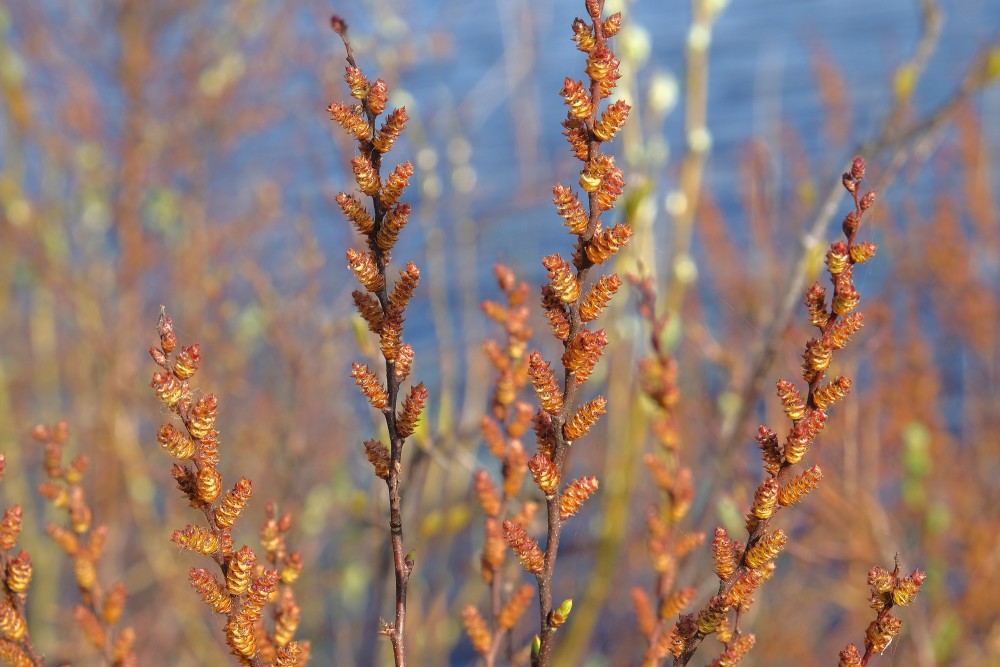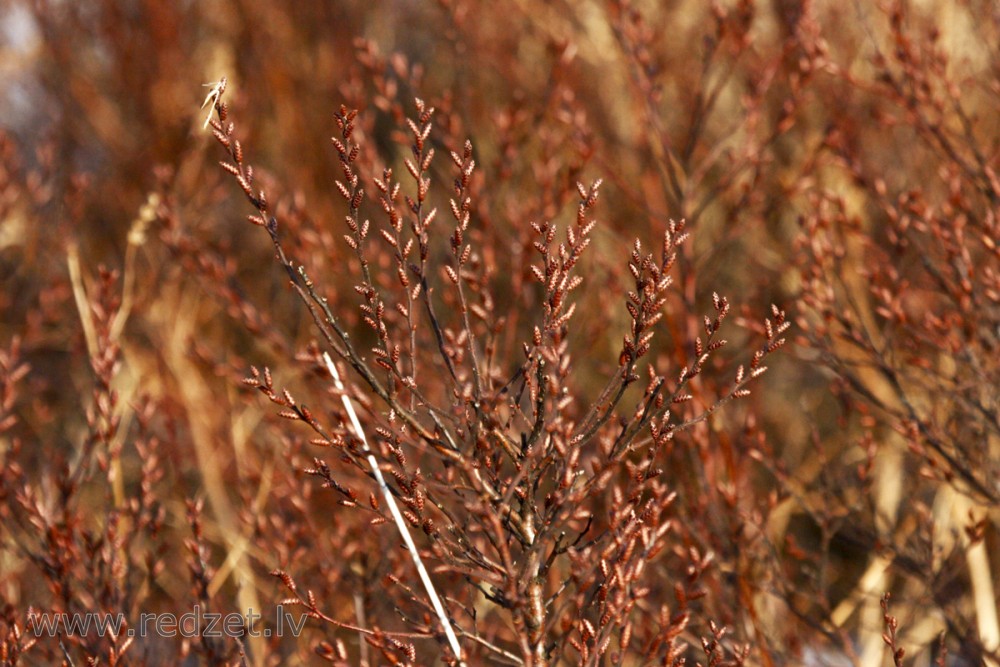(Myrica gale) Bog-myrtle
Myrica gale is a species of flowering plant in the genus Myrica, native to northern and western Europe and parts of northern North America. Common names include bog-myrtle sweet willow, Dutch myrtle,and sweetgale.It is a deciduous shrub growing to 1–2 m tall. The leaves are spirally arranged, simple, 2–5 cm long, oblanceolate with a tapered base and broader tip, and a crinkled or finely toothed margin. The flowers are catkins, with male and female catkins on separate plants (dioecious). The fruit is a small drupe.
It typically grows in acidic peat bogs, and to cope with these difficult nitrogen-poor growing conditions, the roots have nitrogen-fixingactinobacteria which enable the plants to grow.
Uses
The foliage has a sweet resinous scent and is a traditional insect repellent, used by campers to keep biting insects out of tents. It is also a traditional component of Royal Wedding bouquets and is used variously in perfumery and as a condiment.
In north-western Europe (Germany, Belgium and the Netherlands), it was much used in a mixture called gruit as a flavouring for beer from the Middle Ages to the 16th century, but it fell into disuse after hops supplanted gruit herbs for political and economic reasons.In modern times, some brewers have revisited this historic technique and in Denmark and Sweden the plant is commonly used to prepare home-flavoured schnaps.
In some native cultures in Eastern Canada, the plant has been used as a traditional remedy for stomach aches, fever, bronchial ailments and liver problems. "The Creole Doctor", an 1886 article by Lafcadio Hearn, discusses the uses of the plant, known locally as "cirier batard," in Louisiana creole folk remedies.In Scotland it has been traditionally used to ward off the Highland midge,and it is marketed as an insect repellent and as an ingredient in some soaps.
In 2007 there were plans to increase production of the plant in Scotland for use as an essential oil for treating sensitive skin and acne.The plant has been listed as an abortifacientand therefore should not be consumed by women who are, or might be, pregnant.
en.wikipedia.org
https://en.wikipedia.org/wiki/Myrica_gale
Continue reading



